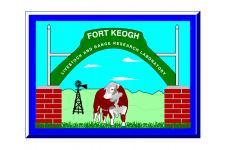What are EPDs?
Expected Progeny Differences (EPDs) are estimates of an animal's genetic value. They are estimated by evaluating an animal's progeny. Genomic-enhanced EPDs (ge-EPDs) are estimated using traditional progeny data as well as genomic data relating to traits of interest.
Where did they come from?
Robert Bakewell
Robert Bakewell, an English stockmen began breeding cattle to reach a specific conformation:
A low-set, blocky, quick-maturing animal.
The basic tenets of modern animal breeding are built upon Bakewell's work:
1) It is very important to define a breeding goal.
2) You must measure and employ genetic merit for breeding decisions.
Fort Keogh Production Records
Fort Keogh Livestock and Range Research Laboratory begins maintaining records on all cattle. Records are maintained for breeding performance and carcass traits.

BLUP, Genetic Merit, and EPDs
BLUP is developed in the early 1970s and described by CR Henderson at the 1975 BIF Conference. BLUP is used to evaluate herds to estimate genetic merit. This genetic merit is used to estimate EPDs.

GE-EPDs
Genomic testing in cattle was introduced in the early 2000s. Genomic testing allows for enhancement of EPD quality through SNP identification.

What is the purpose of an EPD?
EPDs are used by cattle producers to select the most appropriate animals for their specific breeding program. Producers do this by comparing animals at their traits of interest to see which ones will be most useful. Traits measured by EPDs range from birth weight of calves to marbling quality of meat produced. Determining which traits are most useful for your herd is a very important part of animal breeding. Furthermore, one must understand how the traits can affect each other. That is beyond this article however; instead just understand that EPDs can help a producer make a decision about traits of interest.
EPD Traits Relevant to Missouri Beef Producers
Most of Missouri's cattle population consists of small, usually less than fifty head, cow-calf operations. Due to this most of Missouri's producers are interested in animal's with superior reproductive traits. Some traits of particular interest in the Beef cattle industry are Calving Ease (CE), Birth Weight(BW), Weaning Weight(WW), and Yearling Weight(YW).
| Trait | Explanation |
|---|---|
| CE | A calculation based upon calving ease and birth weight; indicates an animal's ability to produce offspring that can be delivered unassisted. This is very important for animals living on pastures. A higher EPD indicates more successful, unassisted births. |
| BW | An indicator trait for calving; typically animals with lower birth weight pose less problems during parturition. A lower EPD represents a smaller calf. |
| WW | An estimate of an animals' weight at weaning. Higher EPDs represent higher weights. |
| YW | An estimate of an animals' weight at one year of age. Again, the higher the EPD the higher the weight. |
Ideally, one wants to producer larger animals, but not at the expense of calving difficulty. This is an example of why it is important to understand the relationship between traits. The Examples page provides some specific examples of selection for a cow-calf herd.